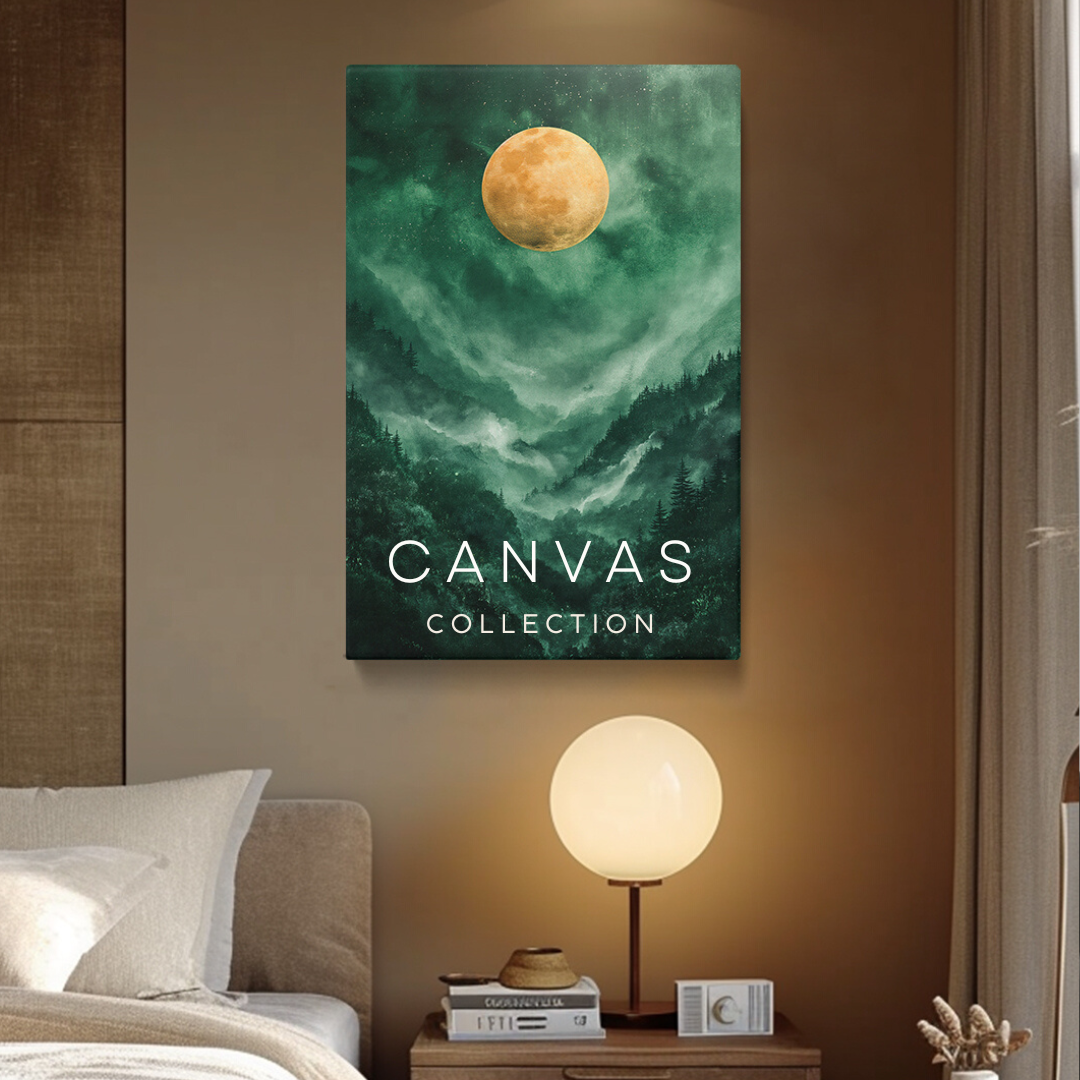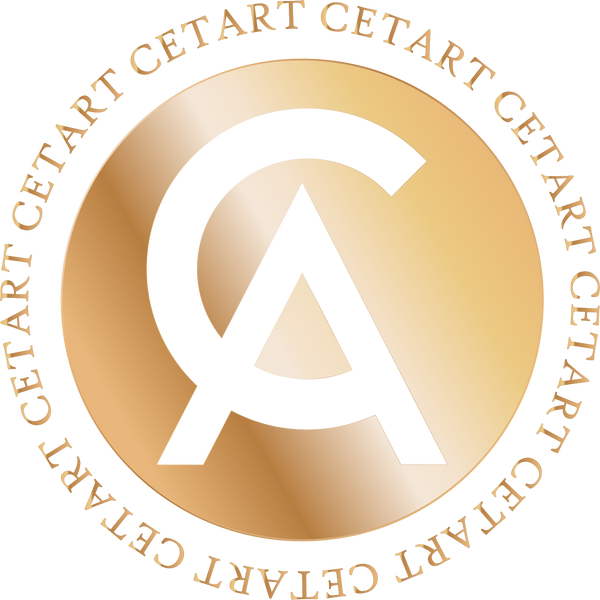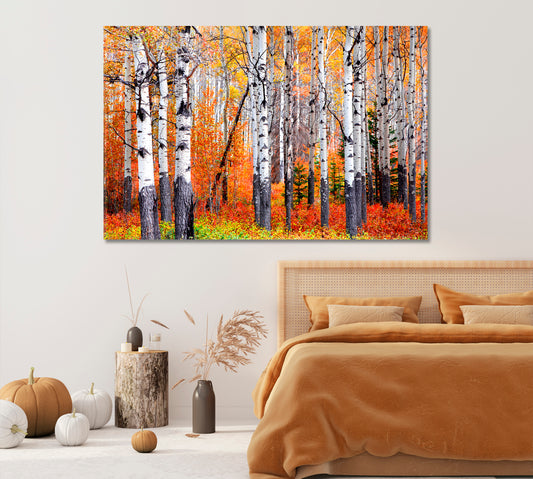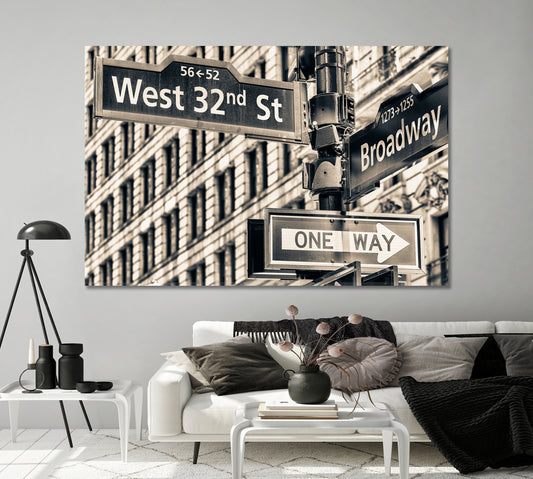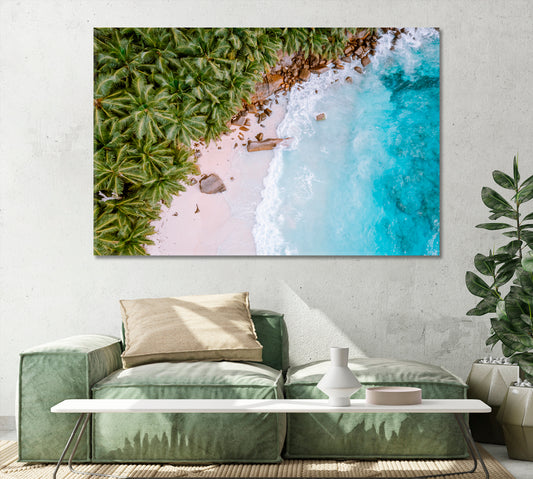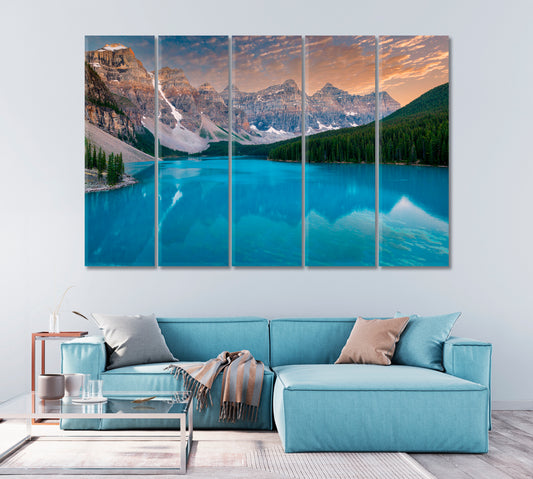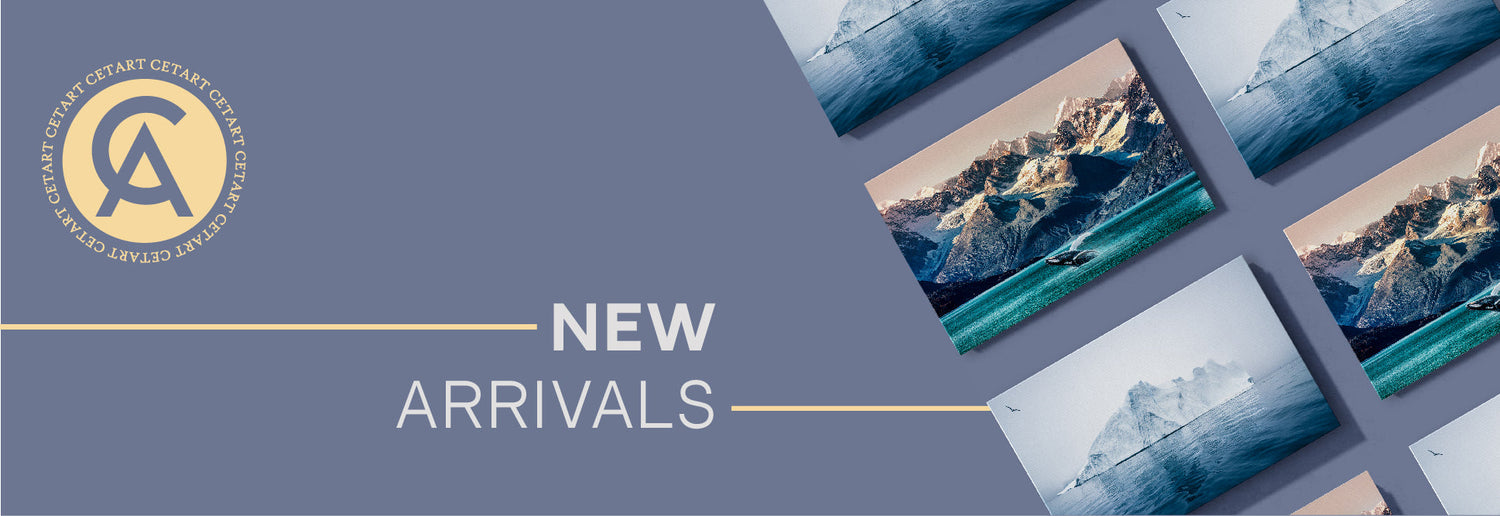
Abstract Expressionism
Share
Abstract Expressionism
Abstract Expressionism was a broad movement in American painting that became prominent in the 1950s. It included a variety of styles, techniques, and expressions, spearheaded by artists like Jackson Pollock, Mark Rothko, Joan Mitchell, and Helen Frankenthaler. This movement was characterized by a significant departure from traditional artistic standards, emphasizing spontaneity and gestural brushwork or mark-making. This approach conveyed a sense of immediacy and direct expression, often creating an impression of spontaneous activity.
The paintings in this style were typically large in scale, featuring non-objective imagery, which means they did not represent or depict specific, recognizable subjects. They often lacked a clear focal point and displayed visible signs of the artist's process, like drips and strokes of paint. However, these characteristics were not uniformly present in all Abstract Expressionist works. This diversity and emphasis on personal expression make Abstract Expressionism a unique and influential chapter in the history of modern art.

Abstract Expressionism Articles:
-
"The Pioneers of Abstract Expressionism: Exploring the Legacies of Pollock, Rothko, and Mitchell" - This article would delve into the lives and works of key figures in Abstract Expressionism, examining how their unique styles and techniques contributed to the movement and influenced future generations of artists.
-
"Abstract Expressionism and the American Spirit: How the Movement Reflected Post-War Sensibilities" - An exploration of how Abstract Expressionism mirrored the cultural, social, and political climate of the United States in the 1940s and 1950s, reflecting the complexities and anxieties of the post-World War II era.
-
"Beyond the Canvas: The Role of Galleries and Patrons in the Rise of Abstract Expressionism" - This piece would look at the impact of art galleries, collectors, and patrons in promoting and shaping the Abstract Expressionist movement, and how their support helped these artists gain recognition and influence.
-
"Abstract Expressionism in Global Context: Influences and Parallel Movements" - An analysis of how Abstract Expressionism interacted with and was influenced by other contemporary art movements around the world, and how it, in turn, influenced global art trends.
-
"The Techniques of Abstract Expressionism: Breaking Down the Methods and Mediums" - A detailed look at the various techniques and mediums used by Abstract Expressionist artists, including action painting, color field painting, and the use of non-traditional materials and methods.
-
"Women of Abstract Expressionism: Uncovering the Overlooked Contributions" - This article would focus on the often-overlooked female artists in the Abstract Expressionism movement, highlighting their contributions and challenges in a predominantly male-dominated field.
-
"Abstract Expressionism in the Digital Age: Preserving and Innovating a Classic Style" - Exploring how modern technology and digital mediums are being used to both preserve the works of classic Abstract Expressionist artists and to create new works inspired by their techniques and philosophies.

6 steps to improove the Abstract Expressionism:
Study the Masters: Begin by studying the works of key Abstract Expressionist artists like Jackson Pollock, Mark Rothko, and Willem de Kooning. Analyze their techniques, choice of colors, and the emotions conveyed in their works. Understanding their approaches can provide a solid foundation for your own exploration of the style.
Experiment with Techniques: Abstract Expressionism is known for its innovative techniques, such as action painting or drip painting. Experiment with these techniques, as well as with different tools and materials. Don't limit yourself to traditional brushes; explore using knives, sponges, or even your hands to create different textures and effects.
Develop Your Own Style: While it’s important to learn from the masters, developing a personal style is crucial. This could mean evolving a unique brushstroke, color palette, or thematic focus. Your style should reflect your own experiences, emotions, and perspectives.
Understand the Theory: Read about the theories behind Abstract Expressionism, including its roots in surrealism and its philosophical underpinnings. This knowledge can deepen your appreciation of the movement and inform your own artistic decisions.
Practice Spontaneity and Emotion: Abstract Expressionism is characterized by spontaneity and the expression of raw emotion. Practice letting go of strict control and allow your emotions to guide your work. This can be challenging but is essential to capturing the spirit of the movement.
Engage with the Art Community: Share your work with others, attend exhibitions, and join discussions about Abstract Expressionism. Engaging with the art community can provide valuable feedback, inspire new ideas, and keep you informed about contemporary trends and interpretations of the style.
To introduce the principles and key artists of Abstract Expressionism.
- Brief History: Start with a short overview of the movement, its origins, and its significance.
- Key Artists: Introduce major figures like Jackson Pollock, Mark Rothko, and Willem de Kooning.
- Artistic Principles: Discuss the main characteristics of Abstract Expressionism, such as emotional intensity, non-representational imagery, and emphasis on spontaneous, expressive brushwork.
To experiment with various techniques used in Abstract Expressionism.
- Drip Painting: Demonstrate how to create a drip painting à la Jackson Pollock.
- Color Field Painting: Guide the creation of a color field painting, focusing on the emotional use of color, as seen in Mark Rothko's work.
- Gestural Brushwork: Teach gestural painting techniques, emphasizing the physical act of painting.
To familiarize participants with the materials and tools used in Abstract Expressionism.
- Choosing Paints: Discuss the types of paints (oil, acrylic) used by Abstract Expressionists.
- Tools Exploration: Introduce various tools like brushes, palette knives, and even unconventional tools like sticks or sponges.
- Canvas Preparation: Show how to prepare a canvas, including size considerations for large-scale works.
To encourage the development of a personal abstract expressionist style.
Inspiration Session: Encourage exploring personal experiences or emotions as inspiration.
Style Experimentation: Guide participants in experimenting with different techniques to find what resonates with them.
Creating a Signature Piece: Assist in creating a personal artwork that reflects their individual style.
To teach the importance of spontaneity and emotional expression.
Warm-Up Exercises: Use quick, spontaneous painting exercises to loosen up.
Emotional Expression: Guide exercises that connect emotional states to painting methods.
Critique and Reflection: Provide feedback and encourage reflection on the emotional content of the artwork.
To explore advanced techniques and complex compositions in Abstract Expressionism.
Layering and Texture: Teach techniques for creating depth through layering and textural variations.
Balancing Composition: Discuss how to create a visually balanced yet abstract composition.
Incorporating Mixed Media: Explore the use of mixed media, combining different materials for unique effects.
To showcase work and engage in constructive critique.
Art Showcase: Organize a small exhibition of the participants' works.
Group Critique: Conduct a group discussion, offering constructive critiques and insights.
Reflection and Feedback: Encourage participants to reflect on their learning journey and provide feedback on the tutorials.
Educational Value
- Art History and Appreciation: There's a growing interest in art education, particularly in understanding influential movements like Abstract Expressionism. This category can offer deep insights into the history and evolution of modern art.
- Artistic Techniques and Practice: For aspiring artists and students, learning the techniques of Abstract Expressionism (like drip painting and color field painting) can be a valuable addition to their skill set.
Cultural and Societal Impact
- Cultural Understanding: Abstract Expressionism, rooted in post-World War II America, reflects significant cultural and historical contexts. This aspect can appeal to those interested in cultural studies and history.
- Expression and Mental Health: The emphasis on emotional expression in Abstract Expressionism resonates with contemporary discussions around mental health and the therapeutic benefits of art.
Artistic Innovation and Contemporary Relevance
- Modern Art Practices: There's a trend of revisiting and reinterpreting classic art styles. Abstract Expressionism can inspire contemporary artists to explore new forms and mediums.
- Digital Art and Technology: With the rise of digital art, the principles of Abstract Expressionism can be explored through new technologies, creating a bridge between traditional art and digital expression.
Commercial Opportunities
- Art Sales and Collectibles: Original works and prints from Abstract Expressionist artists can be highly sought after in the art market, appealing to collectors and investors.
- Merchandising and Licensing: The iconic imagery of Abstract Expressionism can be used in merchandise like posters, clothing, and home decor, appealing to a broad consumer base.
Community and Social Engagement
- Exhibitions and Events: There's potential for organizing exhibitions, both virtual and physical, focused on Abstract Expressionism, attracting art enthusiasts and the general public.
- Online Communities: Creating online platforms and forums dedicated to discussing and sharing works and ideas related to Abstract Expressionism can foster a sense of community among artists and enthusiasts.
Media and Content Creation
- Documentaries and Publications: Producing documentaries, books, and online content about Abstract Expressionism can cater to a growing audience interested in art and history.
- Educational Courses and Workshops: There's a demand for art courses and workshops, both in-person and online, focusing on the techniques and history of Abstract Expressionism.

Are you fascinated by the swirling, dynamic world of Abstract Expressionism? Whether you're a budding artist, a seasoned art lover, or someone curious about this revolutionary art movement, there's never been a better time to dive deep into its vibrant depths. With our carefully curated selection of products and services, all offered at the best prices, exploring Abstract Expressionism has never been more accessible or affordable
Educational E-Books and Guides: Starting at just $9.99, our range of e-books offers comprehensive insights into the history, techniques, and cultural impact of Abstract Expressionism. These guides are perfect for students, teachers, and art history enthusiasts.
- Online Art Courses: Learn from the masters for as low as $29.99! Our online courses cover everything from basic techniques of drip and gesture painting to advanced studies in color field and composition, all taught by experienced artists and educators.
- Art Supplies and Kits: For those ready to put brush to canvas, our art kits, including paints, brushes, and canvases, start at an attractive price of $19.99. These kits are specially tailored for Abstract Expressionism, encouraging you to explore your artistic potential.
- Virtual Gallery Tours: Immerse yourself in the world of Pollock, Rothko, and de Kooning with our virtual gallery tours, available for just $4.99. These tours are an excellent way to experience the grandeur of Abstract Expressionist works from the comfort of your home.
- Prints and Posters: Decorate your space with iconic Abstract Expressionist art. Our high-quality prints and posters start at a budget-friendly price of $14.99, bringing the essence of this art movement to your home or office.
- Documentary and Media Content: For as little as $7.99, gain access to exclusive documentaries and video content, offering in-depth explorations of Abstract Expressionist artists and their works.
- Community Workshops and Events: Join our community workshops and events, starting at $49.99. These sessions offer a fantastic opportunity to connect with fellow art enthusiasts and experts in the field.
- Merchandise: Show your love for Abstract Expressionism with our stylish range of merchandise, including apparel and home decor, starting at $12.99. Each item is designed to capture the spirit and energy of the movement.

